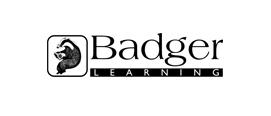Year 3: Forces and Magnets
This list consists of lesson plans, activities and video clips to support the teaching of forces and magnets at Year Three. It contains tips on using the resources, suggestions for further use and background subject knowledge. Possible misconceptions are highlighted so that teachers may plan lessons to facilitate correct conceptual understanding. Designed to support the new curriculum programme of study it aims to cover many of the requirements for knowledge and understanding and working scientifically. The statutory requirements are that children are taught to:
• compare how things move on different surfaces
• notice that some forces need contact between two objects, but magnetic forces can act at a distance
• observe how magnets attract or repel each other and attract some materials and not others
• compare and group together a variety of everyday materials on the basis of whether they are attracted to a magnet, and identify some magnetic materials
• describe magnets as having two poles
• predict whether two magnets will attract or repel each other, depending on which poles are facing.
Visit the primary science webpage to access all lists.
BBC Schools-Friction
Friction is a force between two surfaces that are sliding, or trying to slide, across each other. For example, when you try to push a book along the floor, friction makes this difficult. BBC Bitesize looks at friction.
Children could carry out their own investigation using ramps covered in different materials, predicting which would allow the car to travel the greatest distance.
Badger Science: Foundation and Key Stage One
Page 45 details an investigation which looks at which materials are attracted to magnets and which are not. Children could predict which materials will be magnetic and why, and then test them. Children may be surprised to find that not all metals are magnetic, however only metals which contain iron, nickel or cobalt are magnetic.
Children could go on to investigate the effect of wrapping magnets in paper, cloth, foil and other materials, to find out if they still attract paper clips and other magnetic materials.
Forces and Magnets
This PowerPoint and teachers' notes provide many ideas for activities and games and is a great place to start when planning lessons on magnetism. Use the visuals to guide children in observing practically how magnets attract or repel each other.
The presentation also explores what happens when magnets are hung from threads, compasses and the use of magnets in everyday items.
Magnetic Fun and Games
This resource contains six activities that link to Forces and Magnets, they are designed for use with mixed age groups classes of Year 3 and 4. Activities include:
- exploring the ways forces act on a range of every day objects, including toy cars on different surfaces – comparing movement of vehicles and conducting a fair test.
- classifying forces as a variety of pushes and pulls, including contact and non-contact forces.
- recording data and using it to create a bar graph of the amount of force needed to pull different weights.
- investigating magnetism and magnetic materials whilst devising their own enquiry questions
- using their understanding of magnetism to create their own magnetic toys and games.



